How to Check Tire Pressure

A properly inflated tire is a safe tire. Learning how to check your tire pressure regularly is an important aspect of vehicle ownership. America's Tire shows you how!
Need your tires inspected, including the air pressure? At America's Tire, Tire Inspection is a free service.
Schedule an AppointmentKeeping Proper Air Pressure for Safety
At America's Tire, we are firm believers in having correct air pressure. Keeping your tires aired up to the proper psi will allow them to perform safely. Below we have some tips and guides for checking your air pressure.
Tools to check your tires' air pressure
To check your tire pressure, you'll only need a dependable air gauge. However, if your tires are low on air, you'll need access to an air compressor to get them inflated to the proper pressure. Next, we'll walk you through all the steps.
Checking your tire pressure Step-By-Step
Here's a breakdown breakdown for airing up your tires:
1. Know your vehicle's recommended tire pressure
Your tires should be inflated to the air pressure recommended by the vehicle manufacturer. In most vehicles, you can find this recommendation on the tire placard, which is a sticker with tire information labeled on it, on the inside edge of your driver's side door frame. If it's not located there, consult your vehicle owner's manual.
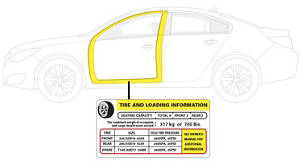
The manufacturer lists the tire pressure in psi (pounds per square inch). It may list different pressures for front and rear tires.
IMPORTANT: You should not inflate a tire to the maximum inflation pressure (found on the tire's sidewall), as it may list a different pressure than what is recommended by the vehicle manufacturer.
2. Check the air pressure before driving
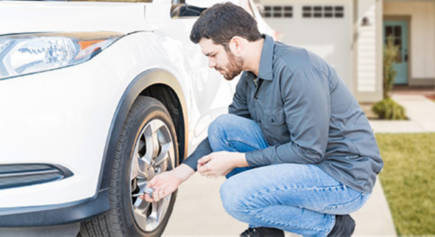
Check your tires when they are cool, or when they are the same temperature as the outside air and have not been driven on. Driving heats the air within the tire, causing the air to expand and give a higher pressure reading.
If you need to check the tire pressure after driving, subtract 3 psi from the air gauge reading to account for the temperature difference. Then compare this value to the recommended tire pressure.
3. Inspect the valve cap
The valve cap protects the opening at the end of the valve stem, the small tube that controls airflow in and out of the tire, preventing air loss. Remove the valve cap from the stem to check the air pressure. When you remove it, inspect it for damage.
Specifically, you are looking for cracking. Most valve caps have a rubber grommet inside the cap to create a tight seal. If the rubber seal is cracked or missing, replace it as soon as possible.
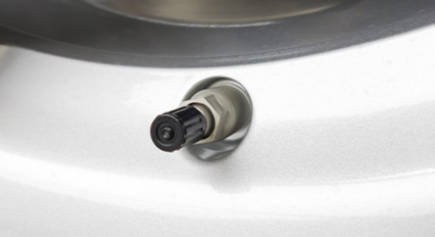
4. Use a dependable air gauge to get the reading
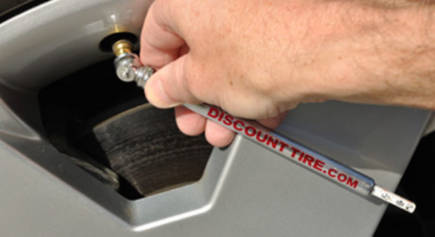
A quality air gauge will consistently provide correct readings. We recommend buying one and keeping it in your vehicle. Gas stations, car washes and other public gauges are notoriously inaccurate due to age, exposure or abuse.
There are several different meter styles: a traditional gauge with meter, pencil type gauge, or even a battery-powered digital model are all viable options.
To check your pressure:
-
Firmly place the gauge's exposed end onto the valve stem. If you hear a hissing sound after you place it on the stem, it is not centered correctly.
-
Adjust until there is no hissing sound and get the reading. Compare it to the vehicle's recommended pressure to determine if you need to add air.
5. Adjust your air pressure
If your air pressure is low (underinflated), it's pretty easy to add air provided you have access to an air compressor. They can be found at many gas stations or you can keep your own.
To fill your tire with air: push the nozzle at the end of the air hose on your valve stem and turn on the compressor to begin the process. If you hear a hissing sound, it's not centered correctly. You can hear the tire inflating when the hose is properly centered on the valve stem.
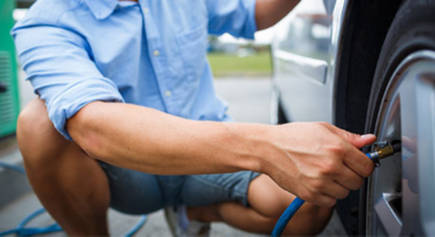
NOTE: Just like public air gauges, public air compressors are often neglected or abused, and may be difficult to properly inflate your tires.
Properly inflated tires are very important, especially when you are towing.
If your tire is overinflated (higher than the recommended psi), you just depress the small brass needle in the valve stem to partially deflate the tire. Most air pressure gauges have a protruding area that is the reverse of the exposed valve end (the brass needle) to make deflation easy.
Underinflation isn't always negative. Off-road enthusiasts often deflate their tires while on the trail for better traction. However, properly inflated tires are key to driving safely on paved roads.
Need some all-terrain tires for your next off-road adventure?
Shop All-Terrain Tires6. Recheck air pressure and reinstall the valve cap
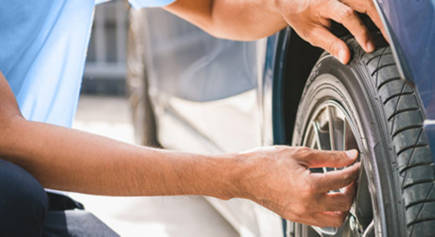
After adding or subtracting air, you should check the pressure again to ensure it's where you need it to be. Always remember to replace the valve stem after you've finished checking or adjusting your air pressure.
America's Tire Provides Free Air Checks
If you're having trouble or would prefer assistance checking your tire pressure, you can drop by your local America's Tire store and take advantage of our complimentary air checks!
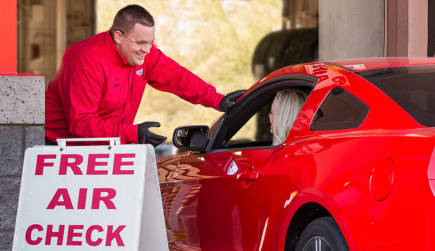
If your tires are consistently losing air, they may need repair or replacement. You can make an appointment with us for repair and replacement to save some time! If you need new tires, we can help you find the right new tire for you. Using Treadwell, our intuitive tire buyer's guide, you can input your driving style, conditions, make and model of your car and so on to analyze the best tire option for you.
Find tires with TreadwellGet a shorter wait time in-store when you buy and book online!